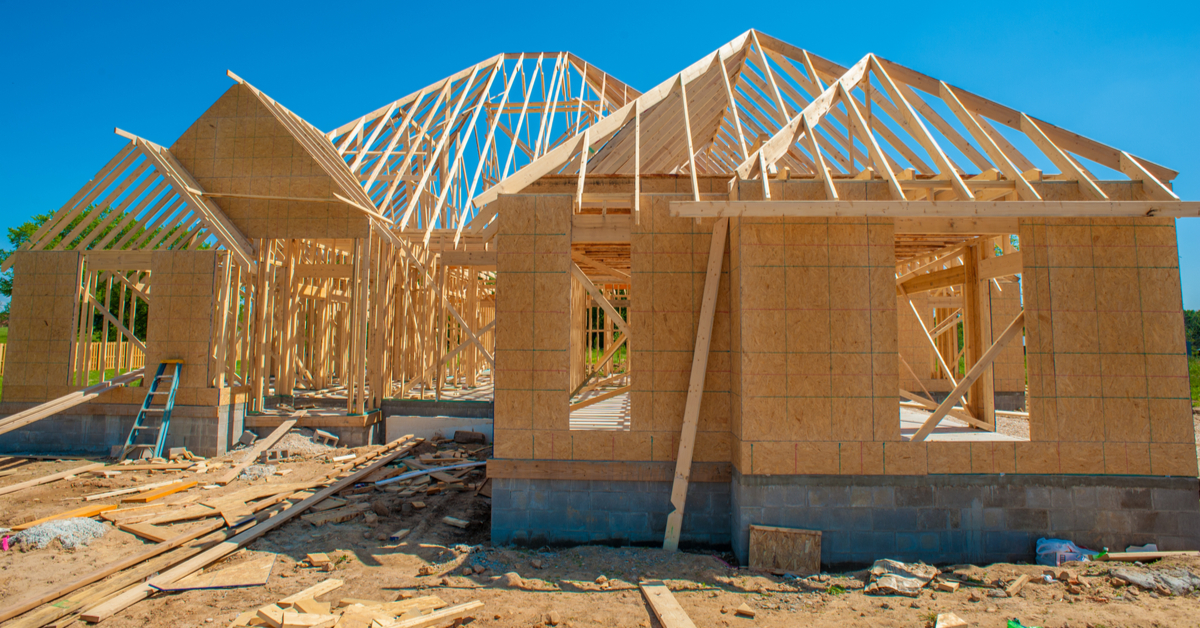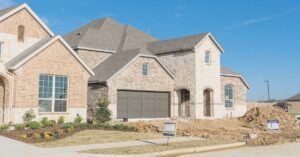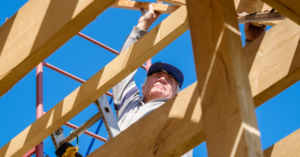A modest May gain in housing starts largely undershot expectations, though a big rebound in homebuilding permits could portend big increases in the future, according to the latest residential construction data from the U.S. Census Bureau.
Privately-owned housing starts in May came at a seasonally adjusted annual rate of 974,000 units, up 4.3% monthly from the revised April pace of 934,000. While the monthly climb represented the first gain in housing starts since January, April’s estimate was the lowest in five years, underscoring the setback dealt to builders by the coronavirus pandemic.
Economists had anticipated an annual pace of over a million units, further spotlighting the scope of how much construction has to catch up to pre-COVID levels.
“Many had hoped that starts would be quicker to get back on track, as construction was mostly deemed an ‘essential’ activity and over half of the 422,200 residential construction jobs that were lost in April were added back in May,” wrote the Wells Fargo Securities Economics Group in Wednesday commentary. “There were some modest upward revisions to April’s awful outcome, but total starts are still off about 40% from January’s peak of 1.6 million.”
Perhaps most discouraging among May’s numbers was the scant 0.1% monthly increase in single-family starts, Wells Fargo said. Single-family homes make up the majority of the housing market, and single-family starts had been gaining steam before the pandemic truly took root stateside. May’s start pace of 675,000 single-family units, however, are 35% below February’s 1 million-unit annual rate.
Annually, May’s pace is 23.2% below the May 2019 rate of 1.268 million. Mike Fratantoni, senior vice president and chief economist for the Mortgage Bankers Association, noted that single-family starts were almost 18% below last year’s pace, and multifamily starts were 33% lower.
Despite starts missing projections, however, observers remain generally upbeat with residential construction’s gradual re-emergence.
“[N]ew construction, even for relatively simple projects, is a time-consuming process and shouldn’t be expected to just bounce back overnight,” said Zillow economist Matthew Speakman. “And reopening shuttered construction sites is a different process entirely than starting from scratch at the permitting stage and working up from there.”
“[T}oday’s release offers still more evidence of slow, steady and positive momentum in the housing market, which remains a rare source of relative strength in the overall economy,” he added.
Permitting numbers, in fact, offer quite the silver lining. Permits authorizing future home building surged to a seasonally adjusted annual rate of 1.220 million in May, up 14.4% from April’s revised rate.
“At only 9 percent below last year, new permits are recovering more quickly and are an indication that the pace of construction should continue to improve in the months ahead,” Fratantoni said.
Single-family authorizations were at a rate of 745,000, up 11.9% from April. Year to date, total single-family permits issued in 2020 are now 1.8% above the first five months of 2019, signaling growth for single-family starts in the months ahead.
The strong permitting figures are supported by further growth in mortgage applications as the country continues to recover from the outbreak. The MBA reported this week that its unadjusted Purchase Index, which measures application volume for purchase loans, was 21% higher last week than the same week one year ago.
“Purchase applications increased to the highest level in over 11 years and for the ninth consecutive week,” said Joel Kan, the MBA’s associate vice president of economic and industry forecasting. “The housing market continues to experience the release of unrealized pent-up demand from earlier this spring, as well as a gradual improvement in consumer confidence.”
Fratantoni was likewise positive, though he did note that low supply levels continue to pose significant downward pressures to the market.
“MBA’s data on purchase applications clearly show that housing demand is brisk, supported by record-low mortgage rates,” he said. “However, unless additional housing inventory is available, this increase in demand cannot be matched by the expected robust increase in home sales. The only bright side of low supply levels are that they should continue to support current home values.”






